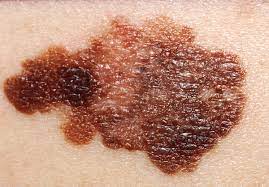
A recent study funded by McGill University examines the heightened susceptibility of individuals in Atlantic Canada to melanoma compared to other Canadians. This provides valuable insights into skin cancer prevention strategies applicable nationwide.
Melanoma, a perilous form of skin cancer, is on the rise globally, including in Canada. Projections indicate that as many as one in three Canadians may develop skin cancer in their lifetime. While Prince Edward Island (PEI) and Nova Scotia exhibit the highest melanoma incidence rates in the country, neighboring provinces like New Brunswick and Newfoundland and Labrador either match or have lower rates than the national average.
To understand this discrepancy, researchers investigated UV exposure and behaviors in various groups across Atlantic Canada, considering factors such as income, education, and gender. Surprisingly, the study found that individuals with higher incomes face an elevated risk of melanoma due to factors like increased lifetime sunburn instances, tanning bed use, and maintaining a tan. Similarly, those with university education demonstrated higher rates of recreational sun exposure but were less inclined to use tanning beds.
Dr. Ivan Litvinov, an Associate Professor in the Department of Medicine and Chair of the Dermatology Division at McGill University, emphasizes, “A higher socio-economic status is known to be associated with more vacations in sunny climates and recreational tanning, which likely ultimately drives melanoma incidence in this population.”
However, the study also revealed that individuals earning less than $50,000 annually were more likely to engage in outdoor work, exposing them to occupational sun exposure and increasing their risk of skin cancer. This suggests that implementing policies to safeguard outdoor workers could effectively mitigate melanoma risk.
When examining disparities between genders, the study uncovered that women generally experience less sun exposure and adopt more sun protection measures compared to men. Men were more prone to reporting a higher number of lifetime sunburns, as well as both occupational and recreational sun exposure. Consequently, they exhibited higher rates of melanoma and other skin cancers.
Despite this, women tended to wear fewer long-sleeve shirts and frequented tanning beds more often. These behaviors, as per the researchers, could account for previous findings indicating that women are more susceptible to developing melanoma on their extremities.
Regarding skin cancer prevention, the study indicated that men harbor more skepticism towards using sunscreen than women. Correspondingly, women displayed greater concern regarding new moles and were more inclined to seek medical advice from a family physician. These behavioral patterns may explain the overall lower incidence and mortality rates of melanoma in women.
The findings also illuminated that residents in the highest-risk communities of PEI and Nova Scotia experienced more sunburns and sun exposure compared to those in regions like Newfoundland and Labrador. Surprisingly, individuals in these high-risk communities possessed a higher awareness of sun protection and melanoma.
Dr. Litvinov asserts, “To prevent skin cancer, many Canadians really need to act on the knowledge they already have. Applying sunscreen is one of the effective ways to prevent skin cancer.”
The researchers recommend tailoring public health initiatives to target specific demographic groups. Dr. Litvinov emphasizes, “You need to have a different sun protection message when you’re talking to a single young man versus a mother of three children.” Additionally, he suggests that governments play a direct role in combating the rising rates of melanoma by considering measures like removing sales tax on sunscreen, aligning with the practice in many other countries.











